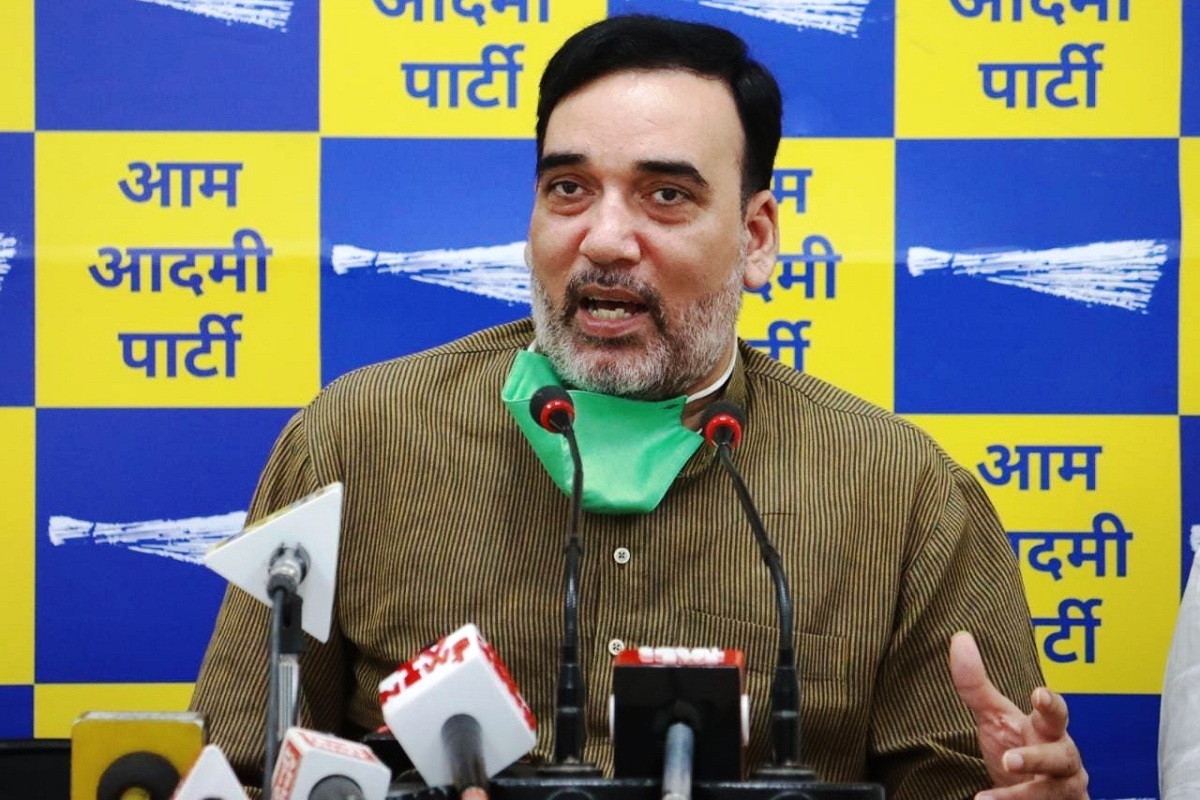Food inflation to calm down on likelihood of bumper kharif harvest: Govt
The review said India’s retail inflation jumped in October to 6.21%, a 14-month high, driven by elevated food inflation in a “few vegetables”.
Environment Minister Gopal Rai today visited the Central Ridge to review the Ecological Restoration of the ridge through Biodiversity Enrichment method. He said that the department aims to develop the Central Ridge Project as a world-class central park

(Image: Twitter/@AapKaGopalRai)
The Delhi government is all set to develop and revamp Central Ridge in accordance with international standards where a campaign for plantation of local species in the Central Ridge has begun.
Environment Minister Gopal Rai today visited the Central Ridge to review the Ecological Restoration of the ridge through Biodiversity Enrichment method. He said that the department aims to develop the Central Ridge Project as a world-class central park. It would also help to alleviate pollution for the residents of Delhi to a large extent.
After the visit, he stated, “In the initial phase of this experimental project, work will begin on 10 hectares of land. The department has set a target to plant local species of plants by eradicating the Vilayati Kikar (Prosopis Juliflora) growing in Delhi. The exercise of removing the invasive tree species will be done by canopy lifting method.”
Advertisement
After conducting a review of the Central Ridge, Environment Minister said, “To suppress the rising number of Vilayati Kikar trees in Delhi, Ecological Restoration of Central Ridge through Biodiversity Enrichment has begun from today onwards.”
In addition, the work of removing the Vilayati Kikar and planting local species has begun as of today. The department is beginning work on 10 hectares of land in the first phase to improve Delhi’s environment. Further, seven and a half thousand hectares of land will also be restored as part of this initiative, he added.
“Under this project, the Central Ridge area would be freed from the Vilayati Kikar first by the cut root stock method as it has been observed that the expansion of exotic species is increasing aggressively,” said Rai.
To suppress this expansion, the work of planting local species has also been started from today onwards.
It mainly includes plants like Hingot, Banyan, Bahera, Cabbage, Chamrod, Pilkhan, Amaltas, Mulberry, Palash, Native Acacia, Khair, Bitter gourd, Gular, Harsingar. Along with this, shrubs like Ghatbod, Curry leaves, Shatavari, Karonda, Ashwagandha, Jharbera, Curry leaves etc. will also be planted.
Highlighting the key points of the project, Rai said, “The Delhi Forest and Wildlife Department will also develop grasslands as part of the Central Ridge Project. It will also be transformed into a butterfly and bird safari. The project will also incorporate the adjacent parks. Also, this pilot project will include the construction of check dams and natural water bodies. As a result, water can be naturally stored there, and people will not suffer a water shortage in the future.”
Rai said, “The government has 14 nurseries around the state where about 60 tree, shrub, and herb species will be prepared for the Central Ridge. In addition, the department is developing training programmes for forest employees on various nursery and plantation techniques so that they will be able to undertake all nursery-related native planting work in the future.”
Advertisement